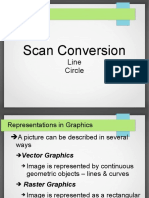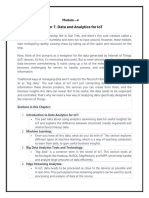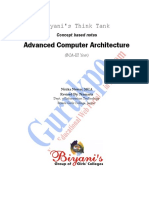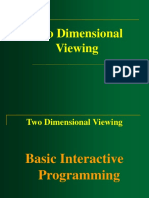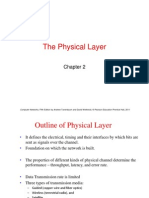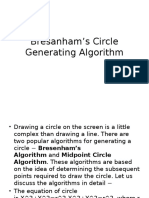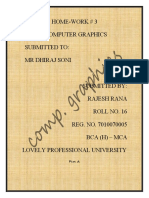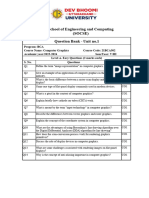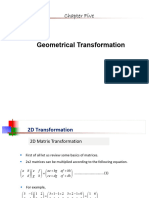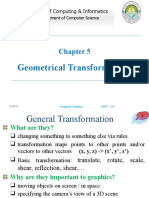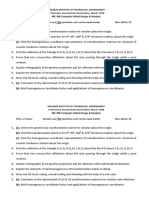0% found this document useful (0 votes)
233 views80 pagesUNIT 2 Computer Graphics
This document discusses various 2D transformation techniques in computer graphics, including translation, rotation, and scaling. It provides examples of translating and rotating different shapes like lines, circles, squares, and triangles using transformation matrices. The key steps and equations for translating and rotating objects in 2D are explained along with solved examples.
Uploaded by
ManikantaCopyright
© © All Rights Reserved
We take content rights seriously. If you suspect this is your content, claim it here.
Available Formats
Download as PDF, TXT or read online on Scribd
0% found this document useful (0 votes)
233 views80 pagesUNIT 2 Computer Graphics
This document discusses various 2D transformation techniques in computer graphics, including translation, rotation, and scaling. It provides examples of translating and rotating different shapes like lines, circles, squares, and triangles using transformation matrices. The key steps and equations for translating and rotating objects in 2D are explained along with solved examples.
Uploaded by
ManikantaCopyright
© © All Rights Reserved
We take content rights seriously. If you suspect this is your content, claim it here.
Available Formats
Download as PDF, TXT or read online on Scribd
/ 80






